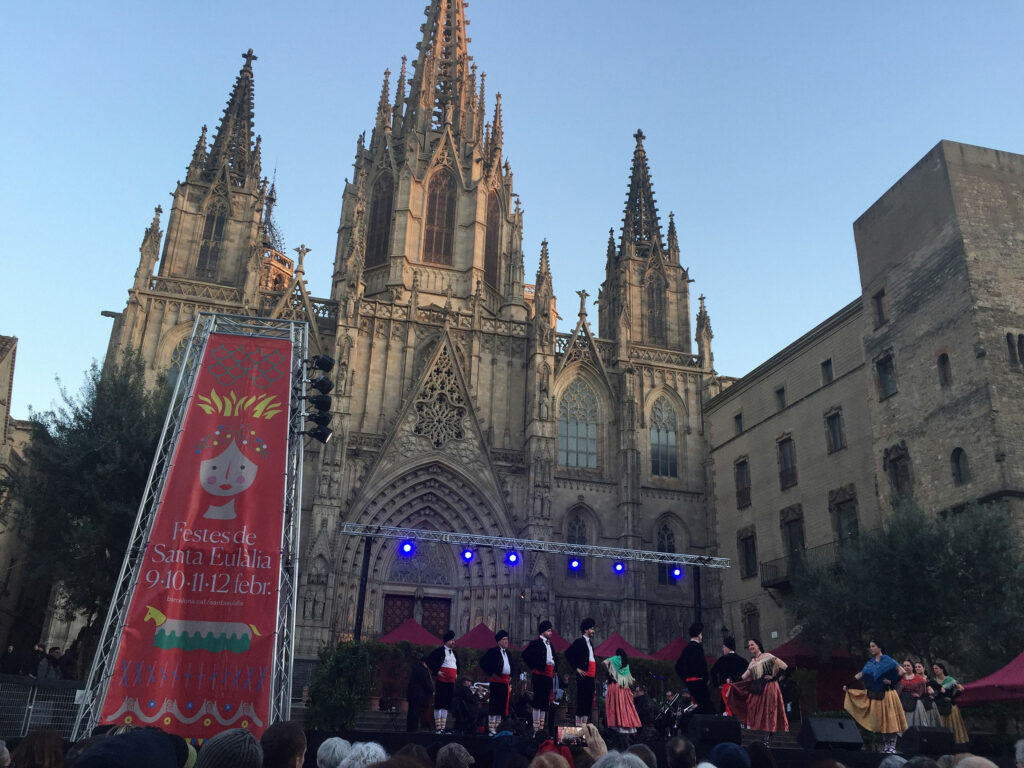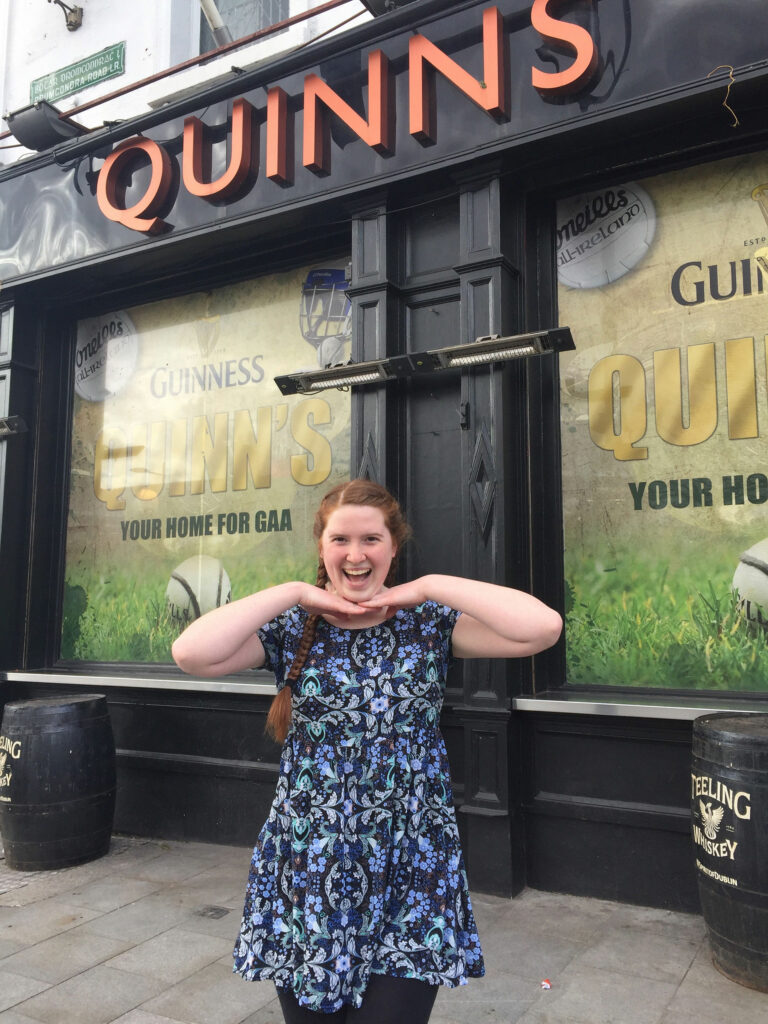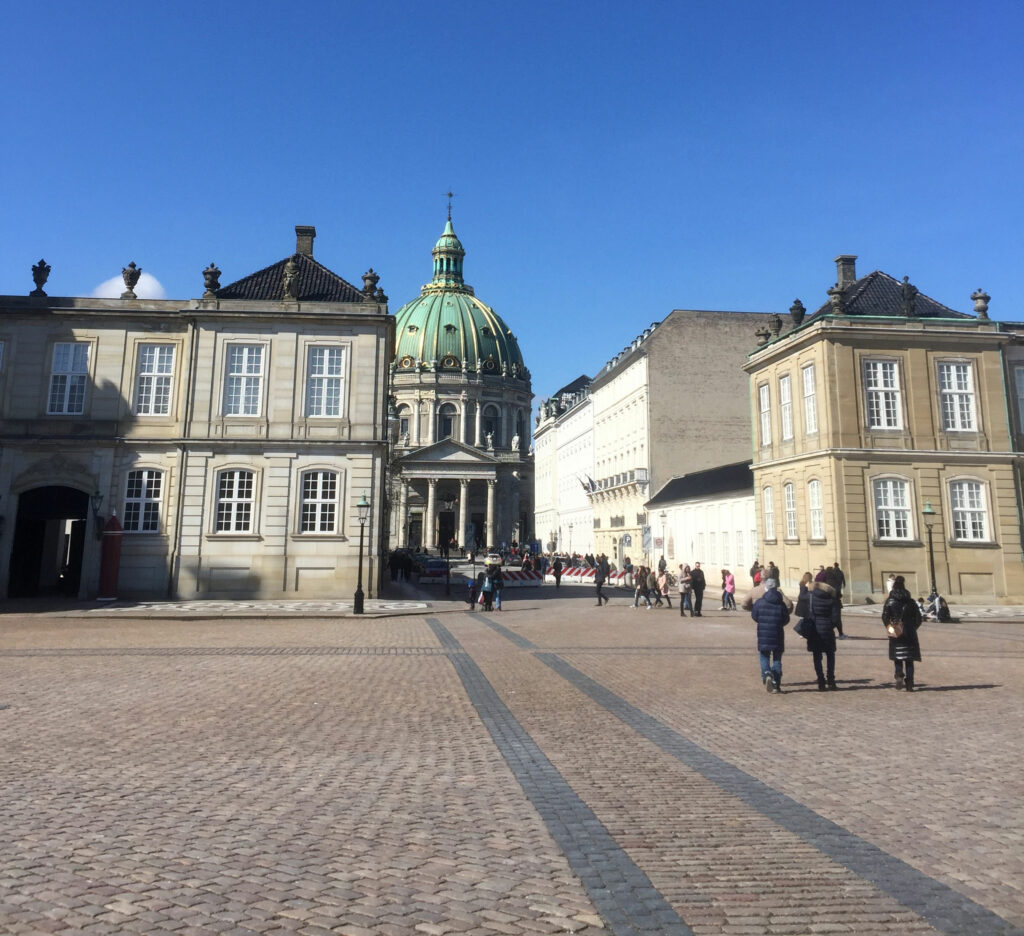Before I studied abroad, I had certain ideas of what I thought each place was going to be like. This varied from expecting to meet many fellow redheads in Ireland to assuming that the way the temperature/weather is measured around the world would be the same. The more I travel, the more I realize that people everywhere tend to make the mistake of believing common myths and popular misconceptions of people and things that are foreign to them. Here are a few of the myths that I realized, and that were shattered, through my experiences traveling this year.
1. Misconception: Units of measurement are the same as in the United States.
Reality: The U.S. is one of the few countries in the world that does not use the metric system, which I didn’t really think about until I went abroad and experienced the temperature reported in Celsius, liquids measured in liters, and height and speed calculated in meters, basically everywhere I traveled. Even telling time was different, because the use of a 24-hour clock (military time) is more common than it is in America.
I’ve talked with several friends who also have studied abroad about it, and while we were (mostly) aware of these differences, we didn’t realize that our experience traveling would be different because of it. Things like checking your flight status at the airport are complicated by the fact that your flight is at 19:10, not 7:10 PM and a standard bottle of soda is 500 ml, which is smaller than the typical 20 fl oz. we might buy at a convenience store back home.
The biggest misunderstandings I’ve had while traveling abroad were with calculating the temperature difference. When I was in Argentina, I was having a conversation about how nice I thought their winter was. I mentioned that I think 70 degrees is a great temperature, and they looked at me with panic in their eyes. I was concerned that I horribly mispronounced setenta, the Spanish word for 70, and then I realized that they use Celsius not Fahrenheit to report temperature. When you do the math, 70 in Celsius is 158 degrees Fahrenheit, so, in hindsight, I can understand how bizarre that must have sounded.

2. Misconception: Common holidays are the same everywhere.
Reality: Depending on a country’s values and history, their holidays vary widely. This is somewhat expected for independence days, and, of course, our American Thanksgiving is not celebrated anywhere except for the U.S. However, I did discover that many other common holidays are different, too. For example, Mother’s Day is different from country to country. In Argentina, it’s the third Sunday of October. In Ireland, it’s the fourth Sunday of Lent (a period of religious observance in Christianity), and in the United States, it’s the second Sunday of May.
Different countries and cities also have other regional holidays and festivals that are unique to them. I happened to be in Barcelona this year for the festival of Santa Eulalia, one of the major patron saints of the city, which takes place around February 12th. I accidentally walked into a few parades during the celebration and got to witness traditional dancing and ceremonies.
When studying abroad in Argentina, I discovered they had a number of these local holidays, such as Teacher’s Day and Student’s Day, which are school holidays. In Dublin, Ireland, the most well-known holiday is Saint Patrick’s Day, though most Dubliners will tell you there are more Americans celebrating that day than Irish people.

3. Myth: It never snows in Ireland.
Reality: Compared to Vermont, it really doesn’t snow much in Ireland, but it does happen typically every eight to 10 years. During my semester abroad in Dublin, a few inches of snow shut down the country, much to the amusement of my fellow Champlain classmates and me.
In Dublin, the temperature rarely drops below freezing, and they don’t have salt, plows or self-heating walkways to handle when it does snow. While it is unlikely that it will snow during your study abroad there; if it does, you’ll probably get a snow day out of it.
4. Misconception: All Spanish speaking countries speak the same Spanish.
Reality: Chances are the Spanish you learned in high school or college isn’t going to be exactly what you hear in South America or Spain. Just like the English spoken in the United States differs from the English spoken in Australia or England, spoken Spanish differs from country to country too.
In Argentina, the informal second person is completely different from anywhere else in the world. I had to learn a different grammatical system to talk to people using “you” or vos as it is in Argentina. Additionally, accents differ from country to country. In Argentina, the letters “y” and “ll” make a “sh” sound. Yo (“I”) is pronounced “yo” in Spain, “sho” in Argentina, and “jo” in Columbia.
As a native speaker, the regional variations are understandable; Spanish speakers from Argentina can understand Spanish speakers from Mexico just like how English speakers from Boston can understand English speakers from Kentucky. As a non-native speaker though, the regional variations can make the language incomprehensible. I still have trouble talking in Spanish to people from Spain, even though I can chat with someone from Argentina or Chile with no problem.

5. Misconception: The Irish pub is a place to party.
Reality: My previous idea of an Irish pub is not an accurate depiction of an actual Irish pub or pub culture for that matter. Pub culture is a definite thing that exists in Ireland. Most people don’t go to pubs to “party;” they go to socialize. It’s like Central Perk from Friends meets a sports bar.
The Irish go to the pub to hang out, watch a sports match (of rugby, soccer, Gaelic football, or hurling), and/or listen to music, and they don’t have to drink at all while they do so. Often, people just go to a pub for food. At the Dublin Gazette where I intern, they occasionally go out for a “pub lunch;” the group will walk over to a local pub for fish and chips or a burger. Pubs are also family-friendly. The Director of Champlain Abroad Dublin told us, students, that the pub he frequents even puts out a bouncy house for children during certain events.

6. Myth: All castles look like they’re straight out of a Disney movie.
Reality: While I have visited some of the castles that inspired Walt Disney, the word castle or palace is used more often used to refer to a large variety of building types. In Ireland, the castles are made of stone blocks. They’re rectangular and quite a few are missing roofs. Liechtenstein’s castles are also made of stone blocks but had rounded towers in addition to the rectangular building parts. Plus, they were all located on hills for defense purposes.
Germany is where you’ll find the castles of Disney fame. Neuschwanstein Castle in Bavaria was the inspiration behind Cinderella’s castle, and it looks straight out of a fairy-tale, both inside and out. However, the Munich Residenz, which housed the Bavarian monarchs, isn’t that elaborate from the outside. The building is massive, but there are no spires or towers. Inside is another story though; the walls and ceilings are elaborately decorated with paintings and gold filigree.
The Prague Castle is actually a castle complex, and the castle itself is boring in comparison to the larger, more elaborate cathedral inside. The complex contains four different palaces, including the Old Royal Palace, which is what people think Prague Castle is.
7. Myth: All people with red hair are Irish.
Reality: As I was studying abroad in Ireland, a few people have joked about how I look more Irish than most Irish people do; while in the United States, many people assume that I’m Irish because I have red hair. Truth is, I’m not. I’m a fourth-generation redhead on my dad’s side of the family, whose heritage is predominantly Eastern-European.
Actually, no one I’ve encountered in Dublin has assumed I’m from there or has asked if I have Irish family. I’ve even been told that redheads aren’t necessarily Irish; red hair is a common Viking trait, not an Irish one. Regardless, walking around Dublin, you won’t see any more redheads than you’d see in New York City or other large cities in the United States.
_____
At the end of the day, I learned the things that will surprise you the most aren’t the “big” differences you anticipated, but rather the little details you didn’t expect at all. Learn how you can study abroad and expand your knowledge of other countries with Champlain’s OIE.
Quinn Kanner is a Junior majoring in Professional Writing with a Journalism specialization and a Foreign Language minor. She is also a Student Ambassador and works as a Student Writer in Champlain’s Marketing Department.